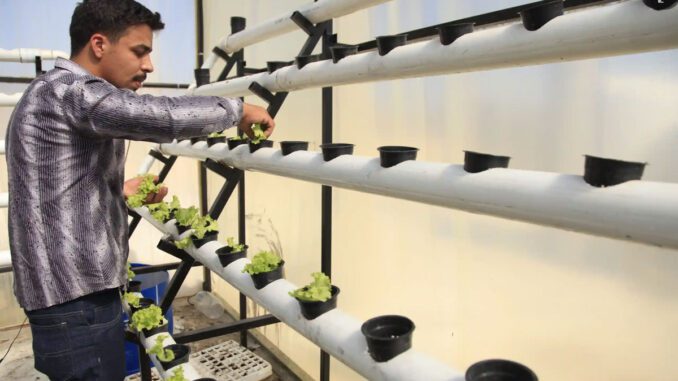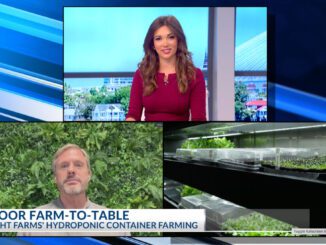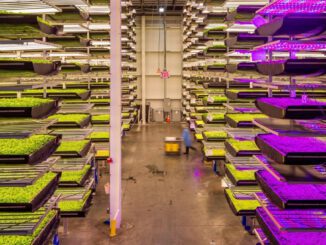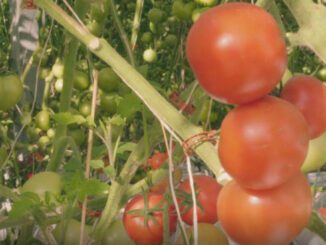
The pharmacist who sells onions: Palestinians go hydroponic in Jordan’s ‘Gaza camp’
In crowded Jerash refugee camp, hydroponic horticulture allows residents to grow their own crops efficiently in an arid country – and provides a stateless people with an income
Gaza Camp Hydroponics. | Shefa’a Qudah |
IMAGE: dris Abu Saleh in his rooftop greenhouse in Jerash camp in Jordan. Photograph: Sami Jarwan
Idris Abu Saleh has got used to being known as the chemist who grows the best onions. Unable to find any work after graduation, now, aged 23, he is supporting his family of eight from his homemade hydroponic greenhouse in a refugee camp in northern Jordan.
“People keep commenting on me being the pharmacist who sells onions,” said Abu Saleh. “But I try not to let that bother me – it’s a job.”
Abu Saleh grows his crops in water rather than soil. Inside his greenhouse, the air is humid as nutrient-rich water passes through rows of red lettuce, strawberries and thyme before returning to an irrigation tank.
A resident of Jerash, the most impoverished of Jordan’s 10 UN-registered camps for Palestinian refugees, Abu Saleh had few opportunities available.

“I cultivate roughly 70kg of onions and 20kg of red lettuce every 40 days,” he says, walking through his neatly arranged 32 sq metre rooftop greenhouse. The income he makes – about £166 with each crop cycle – is enough to support his family.
Locally, Jerash camp is known as “Gaza camp”: it is home to about 30,000 Palestinians whose roots are in Gaza but who fled to Jordan after the war with Israel in 1967.
Most of the roughly 2.2 million Palestinian refugees living in Jordan have been naturalised and enjoy the same rights as other citizens but the Gazans who arrived in 1967, and their children, remain in limbo. They hold no national ID numbers, which means they often cannot find work, own property or receive any state benefits.
Abu Saleh was an early beneficiary of Senara, a hydroponic farming company launched in 2020 by Mohammad Syam. Also a Jerash camp resident, Syam graduated with a nursing degree in 2009 but, like Abu Saleh, had no Jordanian ID. Years of job rejections were compounded by his father’s death, which left him in financial hardship and with family responsibilities.
Syam credits another Jerash camp resident with the idea for his company: “Abu Abdullah was the inspiration behind Senara, as he grew his own food on his roof.

“I then watched hours of YouTube videos on hydroponics, and after a year of applying for grants, I eventually won grants from Unicef and Oxfam to launch the company,” says the 35-year-old father of two.
Since early 2022, Senara has taught 49 people to operate hydroponic gardens and 34 how to build the systems. There are now 164 rooftop greenhouses operating, mostly in crowded refugee camps, but some in ordinary neighbourhoods as well.
One big advantage of hydroponic farming is that it requires a fraction of the water that traditional agriculture needs.
The UN defines water scarcity as one person having 1,000 cubic metres a year, and below 500 cubic metres as “absolute scarcity”. In Jordan, an individual’s annual share is just 80 cubic metres, according to Omar Salameh, a Ministry of Water and Irrigation spokesperson.
Jordanians access water according to a carefully regulated schedule, sometimes once a week, and in rural areas this might only be every two weeks, says Salameh.
Drought, rising temperatures and rapid evaporation is turning scarce arable land into desert, threatening Jordan’s long-term food security.
Last year’s meagre rainfall further depleted Jordan’s dams, while springs are running dry at an alarming rate. Rainfall has been about half of its long-term average in recent years.
Meanwhile, the tiny Middle Eastern country’s population has surged, further straining scarce resources, from 7.2 million in 2010 to about 11 million now. There are at least a million Syrian refugees in Jordan.

Farmers have been increasingly abandoning their fields as extreme droughts cause yields to plummet. But hydroponic farming dramatically cuts irrigation costs, according to Ahmed Mayyas, an agricultural consultant.
Salim Abu Obeid, 21, had been refused work because he had no official status before he started working with Syam in 2021. Now he looks after two plastic greenhouses where Senara displays its hydroponic systems and tests out different crops.
Each morning, he rises early to check the water levels and adds fertilisers to rows of onions, lettuce, broccoli, strawberries and thyme.

No crop rotation is required – the same plant can be grown continuously without any loss in yield. “With hydroponics, all I have to do is remove one seedling and replace it with another,” says Abu Obeid, who looks after greenhouses with a total area of about 1,400 sq metres.
The problem with hydroponics, the growers say, is the high costs upfront – most components have to be imported. According to the water and irrigation ministry, a single system to grow cucumbers can cost 3,000 Jordanian dinars (£3,500), a steep sum for farmers. That partly explains why the practice has not been adopted on a wider scale.
But the benefits are great. Besides requiring a fraction of the water that traditional agriculture uses, hydroponic cultivation also takes up less space, since crops are grown in vertical rows – highly convenient for a crammed refugee camp. And it grants another scarce commodity for refugees in Jordan: financial independence.
“It is important for us to rely on ourselves by securing our own job opportunities and producing our own crops,” says Syam.
This article was published in collaboration with Egab
Original Article Here: https://www.theguardian.com/global-development/2024/feb/05/palestinian-refugees-jerash-camp-jordan-hydroponic-horticulture



